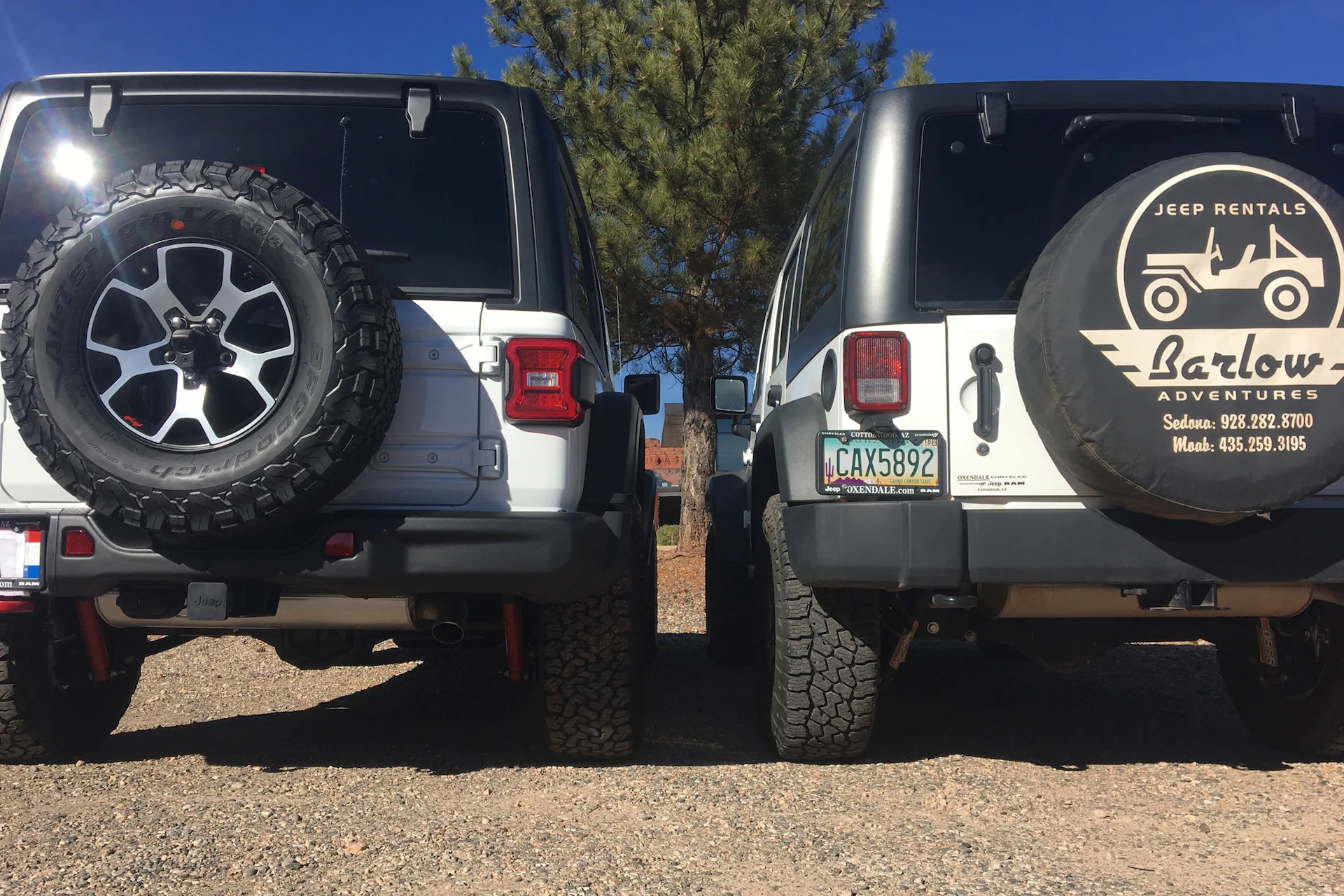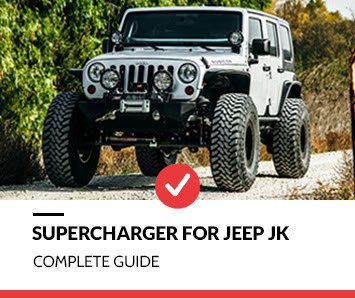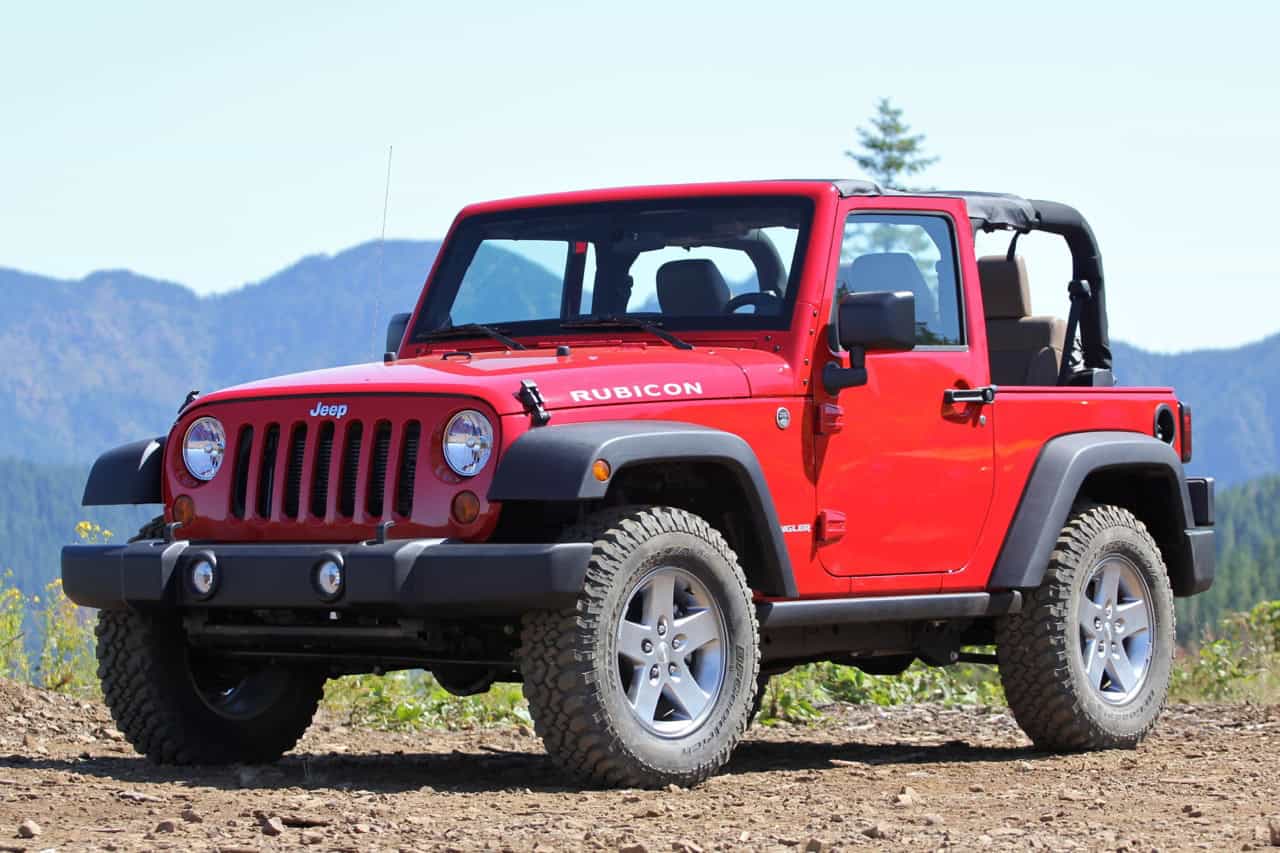The Jeep Wrangler is an iconic 4×4 known for its off-road prowess and open-air fun. But like all vehicles, the Wrangler continues to evolve with each new generation. The most recent redesign came in 2018 when the new Jeep Wrangler JL generation replaced the popular 2007-2018 JK models.
So what exactly changed from the JK to the latest JL Wrangler? In this in-depth comparison, we’ll go over the key differences between these generations to see how Jeep has kept the core Wrangler spirit while modernizing this classic 4×4 SUV.
https://nashvilleperformance.com/the-best-tires-for-jeep-wrangler/
A Brief History of Wrangler Generations
Before diving into the JK vs JL comparison, let’s briefly recap Jeep Wrangler history:
- YJ – The first Wrangler generation was introduced in 1986 as a replacement for the CJ series. Featured a rectangular headlight design.
- TJ – The 1997-2006 models brought coil spring suspension, more comfort, and modernized styling. Still very rugged for off-roading.
- JK – In 2007, the Wrangler JK arrived with four doors for the first time plus revised styling and a new 3.8L V6 engine.
- JL – The latest generation launched in 2018 with a focus on improving comfort, technology, and performance.
Now let’s see how the Wrangler changed from the 11-year JK generation to the recent JL redesign in 2018.

Dimension and Design Changes
The move from the Wrangler JK to JL brought some obvious changes in size and styling:
- 2-door length – The JL is 2.5 inches longer than the JK at 166.8 inches. The JL Unlimited 4-door grew 1.5 inches to 188.4 inches long.
- Width – All JL models are slightly slimmer at 73.8 inches wide compared to the JK’s 74.4 inch width.
- Wheelbase – The 2-door JL has a 96.8 inch wheelbase, gaining 2 full inches over the JK. The larger JL Unlimited wheelbase stretches to 118.4 inches.
- Curb weight – The base JL Sport trim is about 200 lbs heavier than an equivalent JK Sport at 4,237 lbs vs 4,005 lbs.
- Styling – The most noticeable change is the rounded, aerodynamic JL front and rear design versus the traditional flat, boxy JK shape. The JL sports an updated grille, LED head/taillights and curved fenders.
https://nashvilleperformance.com/jeep-wrangler-horsepower-upgrades-jeep-jk-performance-upgrades/
New JL Engine and Transmission Upgrades
Under the hood is where some of the biggest JK vs JL performance differences shine through:
- Engine options – The JL offers a 2.0L turbo 4-cylinder and upgraded 2.2L turbo diesel along with the familiar 3.6L V6. The JK lacked the smaller turbo engines.
- Horsepower – The base 2.0L JL engine packs 270 hp, improving on the JK’s 3.8L V6’s 202 hp output. The JL V6 jumps to 285 hp over the JK V6’s 237 ponies.
- Torque – JL engines make 295 lb-ft (2.0L) to 260 lb-ft (V6) of torque compared to JK outputs of 237 lb-ft for the 3.8L and 265 lb-ft for the 3.6L V6.
- Transmission – All JLs come with a new 8-speed automatic improving acceleration and efficiency versus the JK’s outdated 6-speed auto.
- Acceleration – Hitting 60 mph up to 1.5 seconds faster depending on the engine – a massive improvement thanks to added power and better transmission.
No matter which engine you choose, the JL Wrangler significantly outperforms its JK predecessor making it quicker both on and off-road.
Interior and Technology Upgrades
Jeep put effort into modernizing the JL Wrangler’s interior with added comfort, convenience and tech:
- Touchscreens – JL gets Jeep’s new Uconnect infotainment with a standard 5″ or available 7″ & 8.4″ touchscreen with smartphone integration. A huge tech upgrade over the basic radio in JK.
- Premium features – Options include leather seats, automatic climate control, remote start, heated wheel, and adjustable lumbar support – very rare on older JK models.
- Noise reduction – The JL gets new sound insulation for a quieter ride. No more shouting over wind and road noise!
- Rear space – More legroom, shoulder room and cargo space thanks to the slightly larger JL Unlimited dimensions.
- Safety – Newly standard advanced safety features on the JL include blind spot monitoring, rear backup camera and electronic stability control.
From passenger comfort to entertainment to safety, the JL cabin sets a new standard for a refined but still rugged Wrangler experience.
Off-Road Prowess Maintained from JK to JL
While Jeep evolved the Wrangler JL’s design and technology, they took care to maintain its off-road dominance:
- Ground clearance – Same 10.9″ ground clearance on base models ensures the JL can clear obstacles and rugged terrain.
- Approach angle – A key off-road spec only changed slightly from 42.2 to 41.4 degrees on the JL.
- Departure angle – Decreased 2 degrees from 32.5 on the JK to 30.5 on JL, but still excellent.
- Water fording – No fears of getting stuck with the JL’s 30″ water fording depth equaling the JK.
- Low-range 4WD – The Command-Trac and Rock-Trac 4×4 systems carry over to maximize traction on all JL trims.
- Axle clearance – Shared Dana axles retain their 27.8 degree breakover angle.
The JL retains legit off-road credentials on par with the JK – especially when equipped with features like tow hooks, rock rails, skid plates, and off-road tires.
JK vs JL Off-Road Specs Comparison:
| Spec | JK Wrangler | JL Wrangler |
|---|---|---|
| Ground Clearance | 10.8″ | 10.9″ |
| Approach Angle | 42.2° | 41.4° |
| Departure Angle | 32.5° | 30.5° |
| Water Fording Depth | 30″ | 30″ |
| 4WD System | Command-Trac or Rock-Trac | Command-Trac or Rock-Trac |
| Front Axle | Dana 30 | Dana 30 |
| Rear Axle | Dana 44 | Dana 44 |
JK vs JL: Which Should You Buy?

If you’re shopping for a Jeep Wrangler, deciding between a late model JK or newer JL comes down to budget and priorities:
Reasons to Choose a Jeep Wrangler JK
- Lower purchase price especially on used models.
- Huge aftermarket parts selection with many older JK mods transferable.
- Iconic Wrangler styling purists may prefer.
- Proven reliability and easy repairs with the long-running 3.6L V6.
Reasons to Choose a Jeep Wrangler JL
- Better performance from 2.0L turbo or EcoDiesel engine options.
- Smoother 8-speed automatic transmission.
- Luxury interior features and major technology upgrades.
- Improved ride quality and comfort.
- Newest Wrangler styling and design.
Unless you need the affordability of a used JK, the new JL wins out with its improved powertrains, more premium interior and convenience features that make it more livable for daily driving. Of course, the JK is still highly capable off-road.
Verdict: Notable Changes from JK to JL Generations
In summary, here are the most important evolutions when Jeep redesigned the Wrangler from JK to JL generations:
- All-new turbo engine options, more horsepower and updated transmissions
- Refreshed exterior styling and larger overall dimensions
- Vastly improved interior comfort, tech and standard safety
- On-par off-road abilities maintained from JK
- Harsher ride softened for everyday drivability
After over a decade building the JK, Jeep took large strides modernizing the Wrangler JL without compromising the core features that make it a highly capable 4×4. While the JK remains popular especially as cheaper used models, the JL brings the total package for new buyers.
So while you can’t go wrong with either generation, we give the edge to the JL for most buyers who want the latest tech and performance wrapped in classic Wrangler style. Does the new JL have you considering upgrading your current Jeep? Let us know your thoughts on the JK vs JL debate in the comments!







No Responses